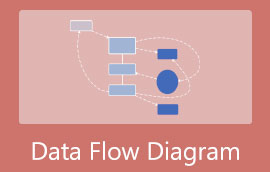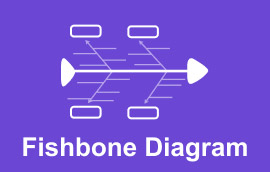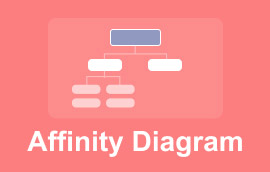Audit Diagram: A Futuristic Understanding of Its Definition and Elements
If you are working as an auditor in a company, you should know the process of an audit diagram. This diagram will depict all the information and the accountability of the employee. Furthermore, it shows and identifies how well the employee did his job or has broken some rules in the company. After all, auditors' primary function is to look for the employees' faults and the financial violations they committed because auditors check the company's financial state and accuracy. On the other hand, this article will help you understand the importance and samples of the diagram used by auditors. In addition, we will also tackle the different types of audit to have a more comprehensive understanding of the process of the audit diagram.

- Part 1. What is Audit Diagram
- Part 2. Different Types of Audit Diagram with Examples
- Part 3. How to Create an Audit Diagram
- Part 4. FAQs Regarding Audit Diagram
Part 1. What is Audit Diagram
An audit diagram is a template that depicts all the processes of auditing. Furthermore, this diagram analyzes and documents the company's financial and inventory transactions. A diagram for audit uses different kinds of symbols depending on the usage and need of the diagram. Hence, the symbols such as the tagged document, tagged process, I/O, process decision, and so much more aid the audit workflow diagram in creating correct and efficient documentation.

Part 2. Different Types of Audit Diagram with Examples
There are different types of audits that you can make a diagram of such as the Internal Audit, External Audit, Payroll Audit, Tax Audit or IRS, the ISA or the Information System Audit, and many more. But in this part, we will determine those kinds of audits mentioned. Because these types play the most crucial role in maintaining efficiency and accurate records within the company.
1. Internal Audit
Auditors that are part of the internal audit team are the ones that originated within the company. Moreover, these internal audits work to monitor and update the board members, likewise the shareholders of the company, about the finances taking place in the company. This type of audit plays a crucial role in the company, for they are also the ones who monitor using the audit flowchart diagram, the employees' effectiveness, examine the process of operation, promote improvements, etc.

2. External Audit
External audits and the other audits are what we call third-party auditors. It means that these auditors are not related or connected to the company. Similar to internal auditors, external auditors seek the accuracy, fairness, and efficiency of the company's financial records. The people who require external auditors are the company's inventors.

3. Payroll Audit
As its name indicates, the payroll audit has full responsibility in examining the payroll process in the company using an audit flowchart diagram. Furthermore, payroll auditors are part of the internal auditors that properly inspect the employees' rates, taxes, wages, and information. It is suggested that these payroll auditors conduct a yearly internal audit to determine if errors occurred.

4. Tax Audit (IRS)
The inspection of the company's filed tax returns is in charge of the IRS tax audit team. This team of auditors seeks to make sure the company does not pay more than what is needed. This auditing method is often conducted by randomly interviewing the concerned employees face-to-face or sometimes via email.

5. Information System Audit (ISA)
The ISA or the information system audit team uses an audit diagram that shows system control in the software used by the company. Furthermore, auditors of this team ensure that all the information in the system is secured and is free from hackers and fraud.

Part 3. How to Create an Audit Diagram
If you haven't tried making a diagram for auditing purposes and would like to try making one, we highly recommend you use the wonderful tools below.
1. MindOnMap
The MindOnMap is an online mapping tool that gives users the most convenient way to create audit flowcharts, diagrams, and maps. With its easy-to-use interface, everyone, beginners, in particular, can be able to make diagrams of any kind. In addition, this wonderful mapping tool contains tremendous icons, stencils, and shapes that are pretty important in making a diagram. Not just that, because the MindOnMap also allows users with different places to share the diagram with their colleagues for collaboration purposes. Otherwise, users can just check the diagram anytime, for it will be kept in substantial free storage in the tool's private gallery.
Another thing you can enjoy about MindOnMap is that you won't see any ads that will bug you every time you make an audit diagram. For this reason, you will be able to experience a smooth, fast, and efficient process, all for free! Thus, let us see and learn how to use this magnificent diagram maker by following the steps below.
Secure Download
Secure Download
Visit the official website of MindOnMap using your browser. Then, once and for all, make your account by simply logging in using your email account after clicking the Create Your Mind Map tab.

On the next page, go to New and choose among the templates and themes you would like to use.

After choosing a template to use for your audit diagram, you will be brought to the main canvas. From there, you may start customizing your diagram. As you can see on the theme chosen, the shortcut keys are shown. Then, begin naming the nodes based on your purpose.

Adjust the shape, color, and fonts of your nodes and text by navigating at the Menu Bar. Feel free to use all the stencils it offers. If you want to attach an image or a link to your diagram, just go to the Ribbon tools under Insert on the interface.

Feel free to export the audit workflow diagram simply by clicking the Export button. Choose the format you would like to have, and a copy will be automatically downloaded to your device afterward.

2. Visio
Another simple yet powerful tool to use is this Visio. Visio is a relative of the Microsoft family, so don't be shocked when you see and use it similarly with Microsoft Word. Furthermore, this software offers tremendous symbols and shapes that perfectly fit your diagram, especially for auditing purposes. Moreover, you can create a mind map in Visio. However, unlike the previous mapping tool, Visio requires payment for you to use it, although it can give the first-time users a free trial for a month.

Part 4. FAQs Regarding Audit Diagram
What is shown in an energy flow diagram in the energy audit?
The energy flow diagram depicts the flow of energy of the company. Technically speaking, this kind of audit diagram shows the energy supply and the power utilization of the consumers.
Are there stages to follow in making a diagram for the audit?
Yes. The following stages or phases must be followed in processing an audit: 1. Preliminary review (Planning), 2. Implementation, 3. Audit Report, 4. Review.
Are the operational auditors part of the internal auditor team?
No. Operational auditors are usually external auditors, but they conduct the audit internally.
Conclusion
There you have it, folks, the samples, process, and flow of the audit diagram. Also, we hope that you were enlightened about the different types of audit diagrams and their proper roles and utilizations. And finally, use the MindOnMap and make it your great tool and assistant in creating powerful diagrams aside from mind maps and flowcharts.










